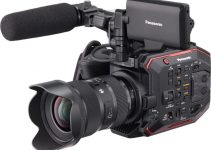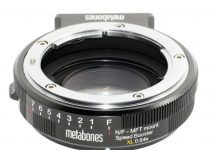There are too many excellent cameras. We have now even broken the usual 4K barriers and have Raw and high frame rate recording in all the top options. Among the best for compact kits are the RED KOMODO 6K and Sony a7S III. Two very different and very powerful options for filmmakers looking to upgrade their camera to the latest tech.
Cinematographer Guillaume Cornet got his hands on both of these cameras to compare. There’s a lot to talk about. We can compare on sensor size, possible resolutions, frame rates, compression options, etc. and that is just the technical comparison. We also have to look at how one is a mirrorless camera and the other is a box cinema camera.
Cornet takes a different approach from most head-to-head videos and gives us his winner right up front: the RED KOMODO.
Why does RED win?
- Richer, more organic image
- Global shutter
- More film-like quality
Still, Cornet immediately qualifies that by saying that he loves both cameras and they are some of the best tools he has ever used. Sony wins when it comes to run-and-gun shooting with no crew. The design and size are better suited to that mirrorless form factor. For commercial work or when there is a real production, the KOMODO is the victor. Though they can be used interchangeably and this isn’t a hard rule.
Getting the comparison ready, Cornet states this isn’t a scientific comparison. He does try to get them as even as possible. For lensing, the KOMODO uses a Canon EF 24-70mm f/2.8L II and the a7S III uses the FE 24-70mm f/2.8 GM. KOMODO also has the PolarPro Matte Box with 2-5 stop VND while the a7S III had a PolarPro 2-5 VND.
Both cameras shared settings where possible. This meant they both were set to 5500K. Video formats were very different, with RED using R3D Raw and IPP2 while Sony had S-Log3 in 10-bit 4:2:2. Editing was with some hand-picked LUTs.
Otherwise, the footage is not heavily touched. No stabilization or the like. However, the RED footage was a bit warm so white balances was tweaked there. The main difference you might pick out is that the KOMODO has a Super 35mm sensor while the a7S III is full-frame and they both are using full-frame lenses.
Cornet runs through a ton of tests, checking out overall image feel, rolling shutter, slow motion, autofocus, and more. Obviously, RED wins when it comes to image feel and rolling shutter but Sony takes home the slow-motion and autofocus sections. Still, both are respectable in all the categories.
Some other talking points relate to workflow. For example, the KOMODO has a calibration process that needs to be done on occasion. Also, the R3D raw is very flexible in post. RED’s menu and touchscreen actually are a bit easier to operate than the a7S III – the benefit of being a cinema-focused system. There is even an iOS app with tons of additional control.
There shouldn’t be too much surprise here. The a7S III punches far above its weight, but it doesn’t compare in many ways to a true “cinema” camera.
What were your thoughts on the comparison?
[source: Guillaume Cornet]
Order Links:
Disclaimer: As an Amazon Associate partner and participant in B&H and Adorama Affiliate programmes, we earn a small comission from each purchase made through the affiliate links listed above at no additional cost to you.



